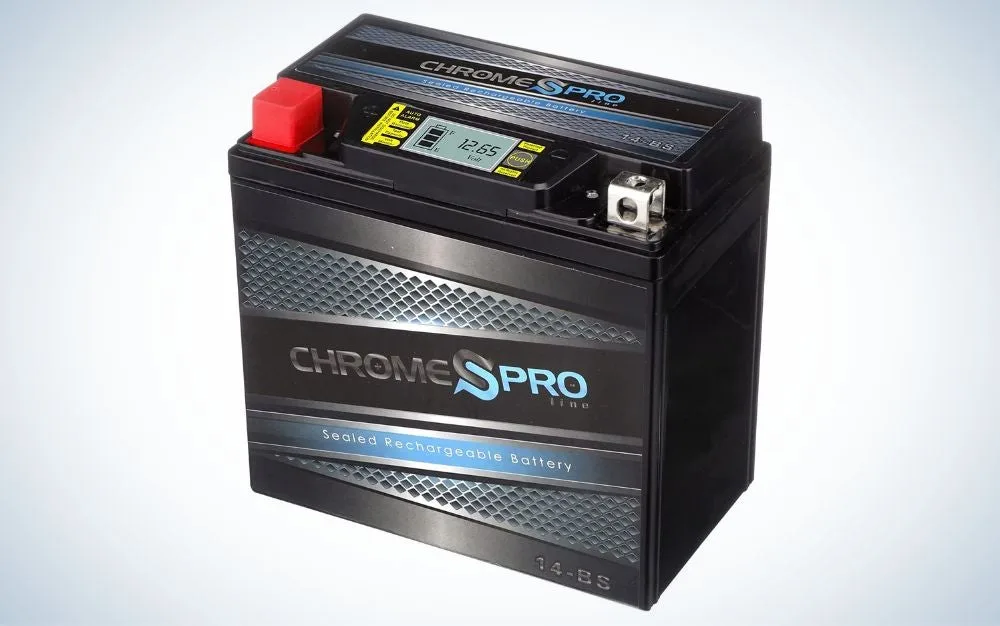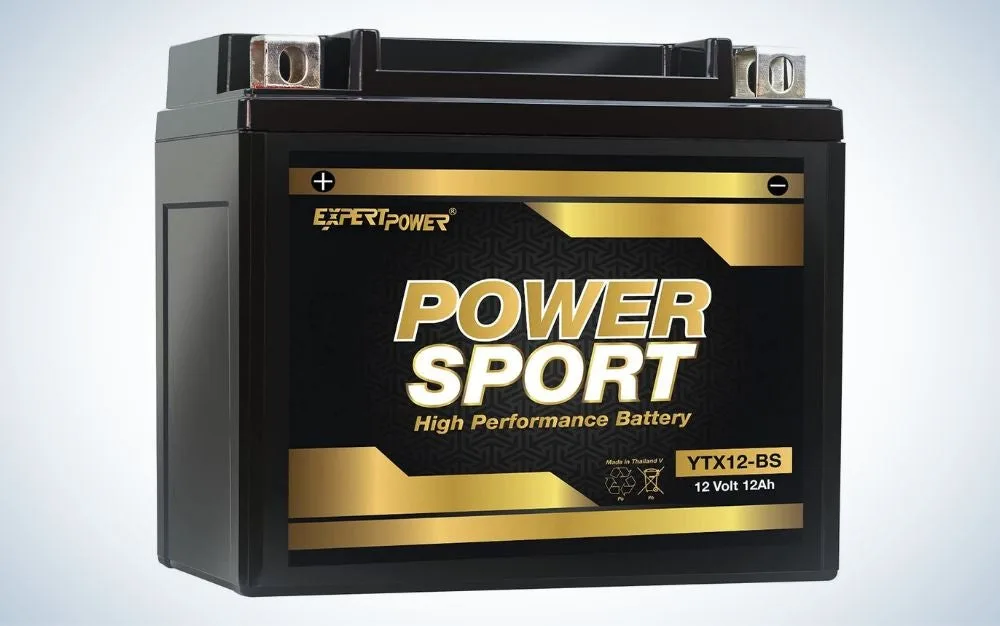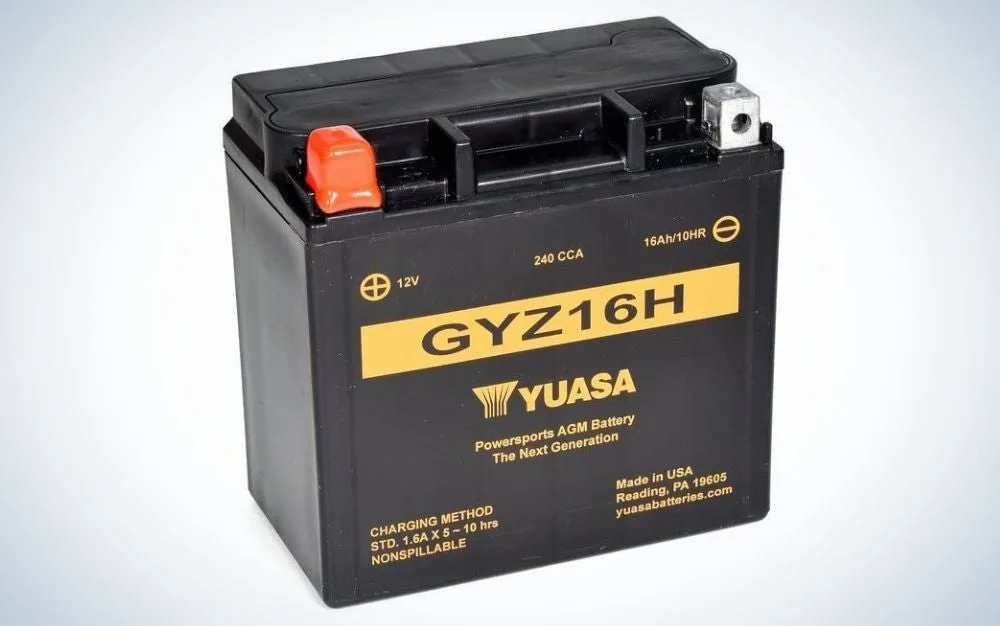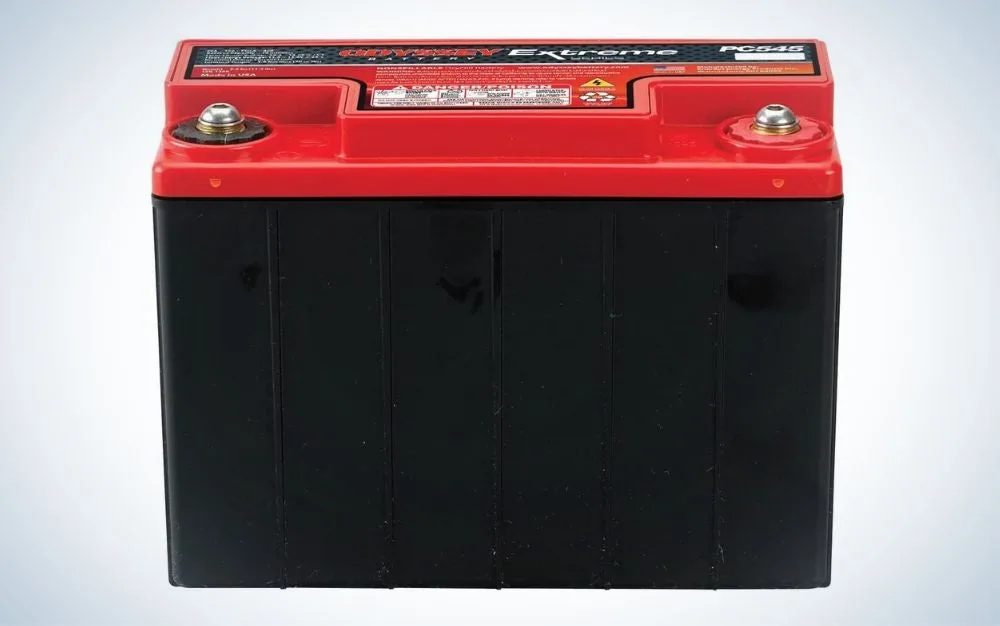_We may earn revenue from the products available on this page and participate in affiliate programs. Learn more ›
_
Best Overall

Chrome Battery YTX14-BS Pro Series iGel
LEARN MORE
Summary
Moderately priced, the YTX14-BS iGel offers more than adequate power in a rechargeable platform.
Best Budget

ExpertPower YTX12-BS
LEARN MORE
Summary
This battery has a lead acid design, is impact-resistant and rugged, and comes with a one-year warranty.
Best for Cold Weather

Yuasa GYZ Series
LEARN MORE
Summary
The GYZ Series has heavy duty terminals, a EZ-Grip cover, and a secure heat-bonded cover.
Bad ATV batteries can ruin a hunt. Picture this: It’s opening day of deer season, and all is right with the world. The blind’s been in position for the better part of a month now, and the trail camera has shown not one or two, but four decent bucks periodically wandering around. Your Uncle Neal’s Marlin 336—in .30-30 Winchester, of course—is shooting tacks, your pack is loaded, and breakfast is just coming out of the cast iron. All that’s left is to crank up the Honda FourTrax and instead of that engine rumble, all you get is a couple of clicks.
Anything mechanical can fail and let you down, often at the most inopportune time. A battery, though, is something that’s easy enough to check, maintain, and, when the time comes, replace. But which battery do you choose from among the dozens upon dozens available? We rounded up the best ATV batteries to make the process a little easier.
Best Overall: Chrome Battery YTX14-BS Pro Series iGel
Best Budget: ExpertPower YTX12-BS
Best for Cold Weather: Yuasa GYZ Series
Best for Durability: Odyssey Extreme Series PC545
How We Picked the Best ATV Batteries
There are a lot of ATV battery options out there. In fact, I’d go so far as to say there’s a ridiculous number of choices for every single make and model of off-road machine. So what criteria did I use to make my decisions here? Truth be told, it was pretty simple.
Power requirements. Does Battery ‘X’ have enough oomph to get equipment running consistently? That last word, “consistently,” is key here.
Dependability_._ A major factor in terms of battery selection is dependability. How likely is Battery ‘X’ going to let me down when I’m in the middle of nowhere, or I haven’t started my machine in 30 days and I need it NOW?
Durability. ATV batteries, by virtue of the machine that houses them, more often than not take a pounding. Is a simple ride in the timber going to split seams, crack the case, or loosen terminals? If I indeed send it, will I immediately be sending it—the battery, that is—back to the manufacturer?
Warranty. One-year or two? Money back, or no-questions-asked replacement? What’s the service record been with the manufacturer; that is, have folks had good experiences if they encountered a problem, or has dealing with the company been a nightmare?
Size and fit. Is battery ‘X’ available in a size compatible with most ATV battery compartments?
Price. ATV batteries come in a wide, variety of price points, but there’s no need to spend more than you have to for a battery with features that you won’t need.
Best ATV Batteries: Reviews and Recommendations
Best Overall: Chrome Battery YTX14-BS Pro Series iGel
Best Overall

Specs
Sealed lead-acid construction
200 CCA/12 Ah
Maintenance-free design
Integrated digital voltage read-out
Pros
Rugged
Vibration resistant
User-friendly design
Comes charged from factory
Mid-price point
Cons
Life expectancy issues (beyond one year) have been reported
Headquartered in Carmel, Indiana, Chrome Battery have been serving the nation’s battery needs for over a quarter century. At the heart of their electrical menu is the Chrome Series, a proven performer for all things off-road and outdoor use.
The battery comes from the factory ready to be installed, the key turned, and the throttle twisted. Claiming more than 2,000 recharges, this fully-sealed lead acid power source measures 5.8 inches wide by 3.26 inches deep by 5.71 inches tall, and can be mounted, according to Chrome literature, in any position needed. With its 200 cold cranking amps, the YTX14-BS Pro Series can handle everything the Upper Midwest, Great Plains, and New England states can dish out in terms of weather…though perhaps not for a prolonged period of time. That said, Chrome does offer a 24-month warranty, as well as a 60-day full-refund policy.
Best Budget: ExpertPower YTX12-BS
Best Budget

Specs
Lead acid design
Impact-resistant and rugged
One-year warranty
Pros
Inexpensive yet reliable
Factory charged; out-of-box ready
Cons
Not a very high cold cranking amps rating
What you have to keep in mind when talking about something like a $10 fishing rod is that you’re talking about a $10 fishing rod. The same goes with ATV batteries. This battery costs less than $40, but it’s known for its out-of-the-box readiness, fit, adherence to factory specifications, and function.
No, it doesn’t have a whole lot in the way of cold cranking amps at 140; however, that shouldn’t be a problem unless you live where it gets cold and stays cold for quite a while.
The YTX12 delivers what you might expect from a no-frills ATV battery: nut/bolt terminals; 12 Ah; average weight of 8.8 pounds; one-year warranty; and a three- to five-year estimated lifespan.
Best for Cold Weather: Yuasa GYZ Series
Best for Cold Weather

Specs
High cold cranking amps
Heavy duty terminals
EZ-Grip cover
Secure heat-bonded cover
Pros
Flush-mounted terminals
Integrated brass attachment nut
Taller plates offer better resistance to self discharge
Maintenance free design
Non-spillable
Cons
Two-plus times the cost of mid-range ATV batteries
With its parent company, GS Yuasa, headquartered in the Arida District of Japan, the U.S. branch of Yuasa Batteries, Inc. in Pennsylvania has been providing the ORV crowds here in The States with reliable power since 1979. In addition to making ATV/UTV batteries, Yuasa also provides units for motorcycles, snow machines, personal watercraft, and scooters.
Contrary to what’s said on television, it’s not “Always Sunny in Philadelphia.” In fact, much of The Keystone State gets downright chilly and often bitterly cold in late fall and winter. Those are the times that separate the good batteries from the not-so-good models. With CCA ratings ranging from 240 in the 16H to a monstrous 500 in the 32HL, Yuasa’s GYZ Series of ATV batteries excel in getting cold metal to turn over when Mother Nature is at her nastiest. These units come ready-to-run from the factory, and feature flush-mounted terminals with integrated brass nuts, meaning they’re user-friendly in a variety of mounting applications.
Best for Durability: Odyssey Extreme Series PC545
Best for Durability

Specs
Comes fully charged
Three to 10-year life expectancy (when maintained properly)
Explosion/corrosion proof
Fully sealed; spill-proof; vibration resistant
Can be mounted in a variety of positions
Full two-year warranty
12 Ah/150 CCA
Pros
Excellent cold-weather performance
Two-year (full charge) storage capability
Fully sealed; spill-proof; vibration resistant
Maintenance free
Cons
Not inexpensive
May require terminal adaptors for some ATV models
Warm weather. Cold weather. Rough riding environment with LOTS of bumps and rattles. Deep-cycle capabilities. Plenty of cold cranking amps. Faster recharge times. Long not-in-use shelf life. The PC545does come with a price tag that reflects all these positive attributes, but if its reliability you’re looking for, backed with a full two-year replacement warranty, then the “Red Top” is your battery.
The PC545 features a fast four- to six-hour full-recharge time—the quickest, says Odyssey, of any sealed LA battery on the market today. But if you ride hard, that’s where the Red Top shines. Fully sealed, it’s spill- and leak-proof, with unmatched vibration resistance. So go ahead—sent it!
Part of the reason, perhaps, behind the PC545’s durability is its position as a pseudo-military version of the popular Hawker line produced by Odyssey’s parent company, EnerSys, which include aviation, military, and submarine power supplies.
What to Consider When Choosing an ATV Battery
Not to sound too obvious, but this isn’t a loaf of plain white bread you’re buying. Sure, some batteries come close to the definition of universal in terms of application, fit, power supply, and level of maintenance needed; however, the vast majority don’t fit that bill. With batteries, it’s a matter of finding a selection compatible with your particular ATV, and then narrowing that selection down according to a number of factors, including the following.
Battery Type
There are two major types or classifications of batteries used in ATVs. The first, and the most traditional, is the lead-acid (LA) battery. Lead-acid batteries do require you to check electrolyte (water/acid mix) levels within the individual cells, and must be mounted upright. This isn’t akin to rocket science, but rather attention to detail. The second type—Absorbed Glass Mat, or AGM—is a sealed, maintenance-free battery that can be mounted in any position. Because their design often leads to longer life, AGM batteries typically cost more than conventional lead-acid batteries.
Bottom line: Less expensive, maintenance necessary, but perhaps shorter lived lead-acid versus more expensive, maintenance free, and longer life AGM.
Voltage
This one’s pretty simple, as almost without exception, American ATVs operate on a 12-volt system, so you’ll need a 12-volt battery. However, a fully charged battery, when tested, will often read in excess of 13 volts, with some pushing 14. That’s okay—it’s the charger bringing the battery back up to 12 volts at 14 volts input.
Size and Fit
Your ATV has a battery box, or a defined space –X” by X” by X”– in which to house a battery. There’s a little bit of wiggle room, but often not much…and sometimes, none. So it’s wise to know these dimensions before you buy.
Cold Cranking Amps (CCA)
A battery’s CCA rating essentially indicates how capable that particular battery is at starting your ATV in cold weather, i.e. at or below freezing temperatures. The higher the CCA rating, the better the battery will function under these cold conditions. Higher CCA typically comes at a cost, though. If you live in a year-round warm climate, higher CCA might not be a concern.
Ampere-Hour (Ah) rating or Capacity
A battery’s Ah rating, or capacity, refers to the amount of electricity that can be pulled from a unit when it’s taken from fully charged to fully discharged, indicated in amp/hour increments. For example, a battery with an 8Ah capacity will deliver 8 amperes of current over the course of an hour.
Price
A lot depends on your battery, so it’s wise to buy the best your wallet will allow.
FAQs
Q: How much do ATV batteries cost?
The price you pay for an ATV battery reflects several considerations, including what you ride; where you ride (warm versus colder temperatures); how often you ride, or how long the battery sits between episodes of discharge/charge; and, last but certainly not least, the importance you place on having your ATV start every time you hit the ignition. That said, batteries will range in price from $25 for some conventional lead-acid units to $150 for high performance AGM batteries.
Q: How long should my ATV battery last?
Properly maintained, i.e. electrolyte levels checked, and battery discharged/charged regularly, a quality ATV battery should provide good service for from three to five years. AGM batteries typically last a bit longer, sometimes twice as long, as do conventional lead-acid batteries. Factors such as poor maintenance, extremely cold weather, and improper charging can negatively affect battery life.
Q: How should I maintain an ATV battery?
Like most mechanical creations, ATV batteries can last longer if maintained properly. This maintenance may include, but not be limited to performing routine cleaning of both battery and terminals; taking care not to discharge the battery below five percent capacity; checking/filling electrolyte levels if needed; and keeping batteries unused for a period of time at peak charge.
Best ATV Batteries: Final Thoughts
Best Overall: Chrome Battery YTX14-BS Pro Series iGel
Best Budget: ExpertPower YTX12-BS
Best for Cold Weather: Yuasa GYZ Series
Best for Durability: Odyssey Extreme Series PC545
There are many, many replacement batteries to choose from, so do you research before you buy. A crucial step here is to check the ATV’s specifications to make sure you are getting the right battery for your rig. Also, measure your battery box so you don’t accidentally buy a battery that’s too big to fit. An ATV without a battery definitely won’t start.
Why Trust Us
For more than 125 years, Field & Stream has been providing readers with honest and authentic coverage of outdoor gear. Our writers and editors eat, sleep, and breathe the outdoors, and that passion comes through in our product reviews. You can count on F&S to keep you up to date on the best new gear. And when we write about a product—whether it’s a bass lure or a backpack—we cover the good and the bad, so you know exactly what to expect before you decide to make a purchase.






